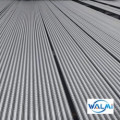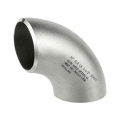Stainless Steel Flanges: The Art and Strength of Industrial Connections
In the vast landscape of industrial piping systems, stainless steel flanges are like sturdy nodes, silently fulfilling a vital role. Today, let us explore the world of stainless steel flanges through a few vivid images.
When we see those two massive stainless steel flange tube sheets, we can almost feel the immense power of industrial manufacturing. Their surfaces are covered with regularly arranged holes, like a carefully laid out chessboard, each with a specific mission. The stainless steel gives them a gleaming, cool appearance, embodying toughness and reliability. Tube sheets are critical components in equipment like heat exchangers. Through these holes, pipes are precisely connected, media flow smoothly within the equipment, and vital industrial processes like heat exchange are achieved. The manufacturing process demands extremely high precision, ensuring precise hole placement and surface finish to ensure tight connections and efficient equipment operation.
Look at the neatly stacked stainless steel flanges, like a formation of soldiers awaiting inspection. Each flange has a standard shape and size, and the bolt holes are evenly distributed along the edges, demonstrating the standardization and regularization of industrial manufacturing. Stainless steel flanges possess numerous impressive properties. Firstly, they offer exceptional corrosion resistance. In complex environments such as moisture, acidity, and alkalinity, elements like chromium in stainless steel form a passive film on the surface, effectively preventing rust and extending the flange’s service life while reducing corrosion-related leaks and replacement costs. Secondly, they possess high strength and pressure resistance, capable of withstanding the pressures and external loads of various media within the piping system, ensuring safe and stable system operation. Furthermore, stainless steel flanges exhibit excellent heat resistance, maintaining stable performance even in high-temperature environments, making them suitable for a wide range of high-temperature industrial applications.
When we place a vernier caliper on a stainless steel flange and precisely measure its dimensions, we can even more clearly appreciate the extreme pursuit of precision in industrial manufacturing. Dimensional accuracy is crucial for ensuring a perfect fit between flanges and components such as pipes and valves. Even the slightest dimensional deviation can result in a loose connection, leading to serious problems such as leaks. Therefore, rigorous dimensional inspection is essential during the production process. Every flange is measured and inspected using precision instruments to ensure it meets design requirements.
In practice, stainless steel flanges are widely used in various industries, including petroleum, chemical, natural gas, shipbuilding, and papermaking. In petrochemical plants, numerous pipes require flanges for connection and fixing to facilitate the transport of various chemicals. In shipbuilding, flanges connect various piping systems onboard, ensuring the vessel’s proper operation in complex marine environments.
Stainless steel flanges, with their unique performance, sophisticated manufacturing processes, and wide range of applications, have become an indispensable component of industrial connections. With the continuous development and innovation of industrial technology, stainless steel flanges will continue to evolve, contributing even more powerfully to industrial progress.







